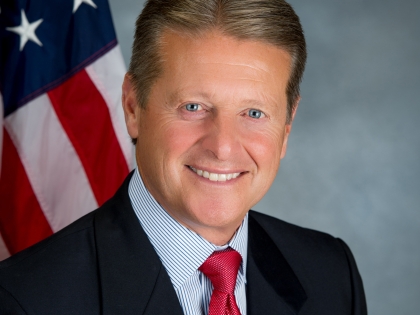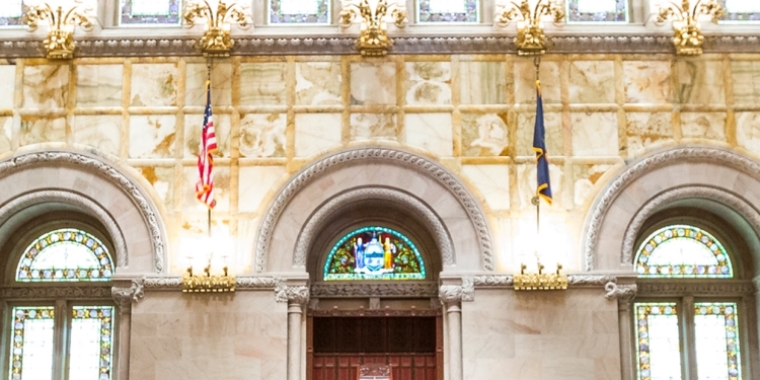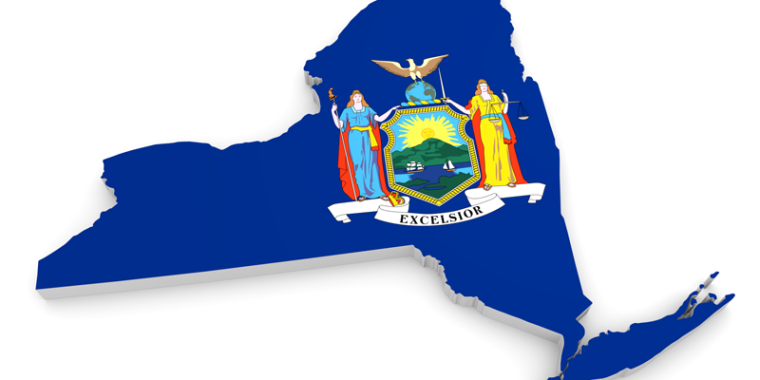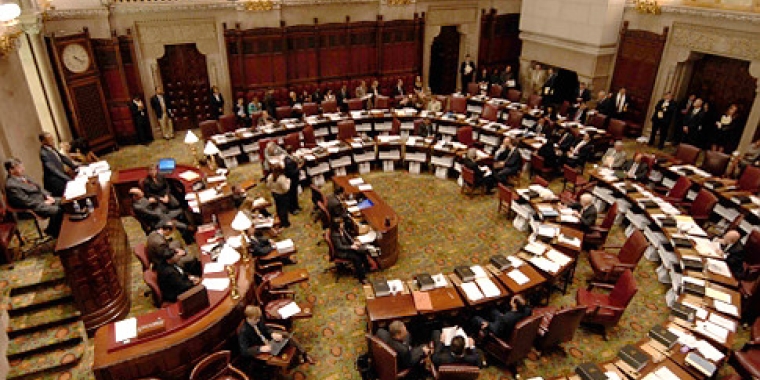
Senator Gallivan says 2016-17 Budget Includes Middle Class Tax Cut and Record Education Funding
Jim Ranney
April 1, 2016
-
ISSUE:
- State budget

Senator Patrick M. Gallivan (R-C-I, Elma) says $155.6 billion 2016-17 State Budget reflects the Senate’s commitment to improving economic opportunities for all New Yorkers. The budget increases school aid by $1.5 billion and eliminates the Gap Elimination Adjustment (GEA) education funding cuts. It also provides one of the largest income tax reductions in history for middle class taxpayers, ensures regional balance in infrastructure investments, and builds on the state’s progress in making New York more affordable.
“The new budget is not perfect, but I believe it is a responsible plan that controls the cost of government and provides tax relief to hard working families across New York through a new middle class income tax cut,” Gallivan said. “In addition to a record high level of education funding, we also achieved one of my top priorities in finally eliminating the GEA, which has had a devastating impact on our schools over the past several years. We are also providing parity in transportation funding to ensure that upstate New York receives its fair share of road and bridge projects and the jobs they create.”
RESTORING FISCAL DISCIPLINE
For the sixth straight year, the budget stays within the self-imposed two-percent spending cap. This fiscal restraint has already saved New York taxpayers a cumulative total of approximately $31 billion.
MAKING RECORD INVESTMENTS IN SCHOOLS
Schools will see a $1.5 billion increase in aid in this year’s budget for a record total education investment of nearly $25 billion. This increase is hundreds of millions of dollars over the original Executive Budget proposal and when combined with the STAR school tax relief program, the state’s total commitment to supporting public education is more than $28 billion this year.
The budget highlights include:
· A $1.06 billion increase in total operating support to include a $626.6 million increase in Foundation Aid over 2015-16 and the elimination of $434 million in GEA cuts;
· Full funding of $341.4 million in Expense Base Aids;
· Restoring $56 million in STAR benefits as a result of rejecting the Executive Budget proposal to cap STAR at 2015-16 levels.
The budget also permanently eliminates the $434 million remaining of the Gap Elimination Adjustment (GEA) cuts for schools this year. The GEA was introduced in 2010 by then governor David Paterson as a way to help close the state’s $10 billion budget deficit, reducing education aid to all school districts by billions of dollars.
PROVIDING REAL TAX RELIEF
Millions of middle class New Yorkers will be eligible for a new tax cut that totals $6.6 billion over the first four years and brings middle class income taxes down to the lowest rate since 1948. By 2025 when the tax cut is fully phased in, it will provide an average savings of $700 per taxpayer per year, for an annual total savings of $4.2 billion.
This year’s budget also continues providing the funds needed to implement $3.3 billion in STAR savings for property taxpayers. This will allow $414 million in property tax rebate and freeze checks that will be issued this year, with the average savings of $350 per eligible household. Basic and Enhanced STAR savings will be $2.7 billion.
ENSURING FAIRNESS IN TRANSPORTATION FUNDING
The budget includes a major Senate priority of ensuring transportation funding that is distributed fairly and is regionally-balanced. It includes a record $27.1-billion transportation capital plan to achieve true parity in infrastructure funding between upstate and downstate.
Meanwhile, the state’s Consolidated Local Street and Highway Improvement Program (CHIPS) will receive $438 million this year to help local governments move forward with important local highway, road, and bridge repair projects. In addition, the Pave NY/Bridge NY program will receive $800 million over the next four years for local roads and bridges. This includes $400 million ($100 million per year) for local projects distributed based on the CHIPS formula and $400 million for local bridge projects that will incorporate local solicitation.
This year’s budget also includes $1 billion over five years for other transportation modes, including $397 million for upstate and non-MTA downstate transit systems, $352 million for rail freight, and $282 million for aviation.
MAKING COLLEGE MORE AFFORDABLE
The budget provides more than $1 billion for the Tuition Assistance Program (TAP) and freezes SUNY and CUNY tuition this year. The new budget also boosts funding for SUNY and CUNY community colleges with an additional $20 million, increasing the full-time equivalent (FTE) funding for the state’s community colleges by $100 and making the base aid $2,697 per FTE for 2016-17.
The final budget rejects an Executive Budget proposal known as the Dream Act, which would have cost state taxpayers $27 million and reward people who are here illegally by giving them free college tuition.
HELPING MEET THE HEALTH NEEDS OF NEW YORK’S FAMILIES
The budget initiates a new program to allow working New Yorkers to spend time with a sick family member or bond with a new child. The employee-paid program will be phased-in over the next four years. It will include workers who have been in their current job for at least six months in order to provide protections and necessary financial resources so that family support can be available.
Meanwhile, community-based health care providers, hospitals, nursing homes, home care and other facilities statewide will be eligible to receive $200 million in new funds from this budget to support critical capital and infrastructure improvements, as well as to integrate and further develop health systems.
Other highlights include:
- The final budget also includes $166 million in funding to help address the challenging public health crisis caused by heroin and opioid abuse in communities throughout the state.
-The final budget restores millions of dollars in funding for women’s and family health initiatives, among other programs. It includes $25.3 million for Cancer Services Programs; $26.3 million for Nutritional Information for Women, Infants, and Children; $9.7 million for chronic disease prevention; $5.5 million for Rape Crisis Centers; $2.3 million for the Prenatal Care Program; $9.65 million for the Doctors Across New York Program and restores $25 million in Excess Medical Malpractice Coverage to recruit and attract physicians to underserved communities; and $1 million to support organ donation, among other programs.
- The budget will fully fund the state’s elderly Pharmaceutical Insurance Coverage (EPIC) program at $131.5 million to help seniors with their prescription drug costs. To help protect vulnerable senior citizens, the budget includes $700,000 to support elder abuse prevention initiatives.
PROTECTING THE ENVIRONMENT
The budget includes record funding of $300 million for the Environmental Protection Fund (EPF) to protect natural resources and ensure clean water and clean air. This is a 70-percent increase of $123 million over 2015-16 funding.
The budget also provides more funding to support critical water and environmental infrastructure improvements in the final budget.
GROWING NEW YORK’S FARMS
The final budget restores more than $9 million for 30 important agriculture programs that were cut in the Executive Budget proposal. These measures are necessary to support the growth of New York’s agriculture industry and helping family farms succeed.
The budget also includes $115,000 in new funding for an innovative proposal by Cornell’s Small Farms Program to help establish up to five veteran-owned small farms through a first-in-the-nation pilot program. Returning veterans and those seeking a career change could be encouraged to try agriculture, utilizing benefits they’ve earned under the GI Bill to gain training and expertise to begin their own successful small business. In turn, these sites would be available to train additional veteran-farmers in future years.
SUPPORTING OUR VETERANS
The new budget continues support for the heroic service men and women who have sacrificed so much to serve our nation by including funding for programs including: $2.8 million for the Joseph P. Dwyer Veteran Peer-to-Peer Program; $500,000 for the NYS Defenders Association Veteran’s Defense Program; $500,000 for the Veterans Outreach Center in Monroe County; $450,000 for the Veteran’s Mental Health Training Initiative; and Military Families Advocacy Project; and $200,000 for Warrior Salute, among other initiatives.
-30-
Share this Article or Press Release
Newsroom
Go to NewsroomSenator Gallivan's Votes for Week of January 15, 2024
January 22, 2024


Senator Gallivan's Votes for Week of January 8, 2024
January 11, 2024

